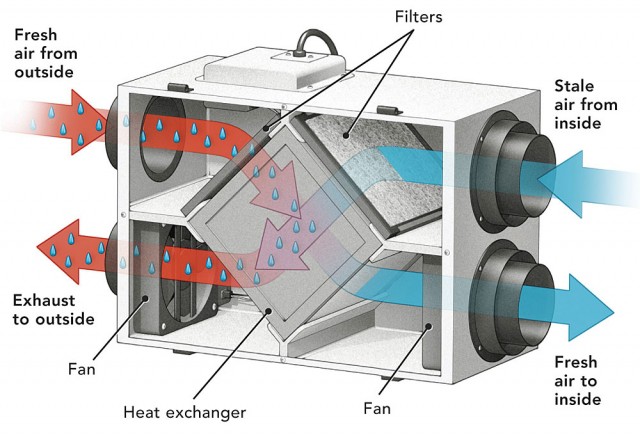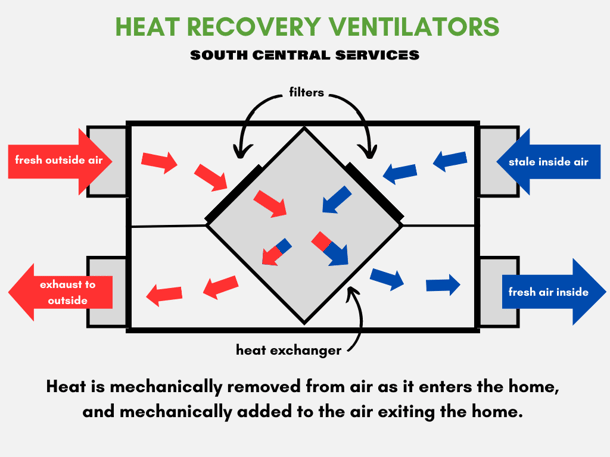Best Strategies to Maintain Your HRV System
Wiki Article
Discovering the Benefits of Heat Recovery Ventilation for Energy Efficiency in Homes
Heat Recovery Ventilation (HRV) systems use home owners a practical approach to improving power performance. By reclaiming warm from outgoing air, these systems can substantially reduce cooling and heating costs. Furthermore, they offer a constant supply of fresh air, boosting interior air quality and convenience degrees. As house owners think about lasting options, understanding the nuances of HRV systems comes to be progressively crucial. What aspects should one assess before making such an investment?Understanding Heat Recovery Ventilation Systems

Exactly How HRV Improves Indoor Air Quality

Power Savings: The Monetary Advantages of HRV
Maximizing power effectiveness, heat recovery ventilation (HRV) systems offer substantial financial advantages for property owners. By recovering and recycling warmth from exhaust air, HRVs noticeably lower heating & cooling costs. This technology can result in power financial savings of up to 30%, depending upon climate and use patterns. Homeowners frequently notice lowered energy costs shortly after installation, making HRVs an economically sensible financial investment with time. Furthermore, many areas supply rewards or refunds for energy-efficient upgrades, additionally enhancing the economic allure. As energy rates remain to climb, the cost-effectiveness of HRVs comes to be increasingly clear. On the whole, the incorporation of HRV systems not only advertises energy efficiency but also contributes to lasting economic savings for homes.The Ecological Impact of Heat Recovery Ventilation
A substantial environmental benefit of heat recovery ventilation (HRV) systems depends on their capacity to lower general power click here for info consumption. By reclaiming warm from exhaust air and moving it to incoming fresh air, HRV systems decrease the demand for energy-intensive home heating and cooling down approaches. This decrease in energy demand adds to reduce greenhouse gas emissions, as much less fossil gas is needed to maintain comfortable indoor temperature levels. Furthermore, HRV systems enhance interior air quality by efficiently trading stale air with fresh exterior air, decreasing reliance on mechanical cooling systems that can hurt the environment. Overall, the execution of HRV systems sustains lasting living techniques and aligns with global initiatives to combat climate change by advertising power effectiveness in residential settings.
Picking the Right HRV System for Your Home
How can homeowners assure they select the ideal heat recovery ventilation (HRV) system for their demands? Initially, they need to analyze their home's size and layout, as these variables influence air movement demands. Next off, evaluating the system's efficiency rankings is crucial, as higher ratings show far better efficiency and energy savings. Homeowners should likewise consider installment and maintenance expenses, comparing various brand names and versions for value. In addition, it is necessary to review sound levels, as some systems operate even more quietly than others. Consulting with heating and cooling specialists can offer customized recommendations based on details home problems. Analyzing customer reviews and warranties can assist in making an informed choice, making certain that the picked HRV system successfully improves interior air quality and energy performance.Regularly Asked Questions

How Commonly Should I Clean or Maintain My HRV System?
The regularity of cleaning or preserving a warm recovery air flow (HRV) system generally depends on use and ecological factors. Usually, it is suggested to do maintenance every 6 months to assure peak efficiency and air high quality.
Can HRV Equipments Assist Reduce Moisture Degrees Indoors?
HRV systems can effectively decrease indoor moisture degrees by trading stale, moist air with fresh, drier air from outside. HRV Heat Recovery Ventilation. This procedure helps preserve a balanced indoor setting, boosting comfort and protecting against moisture-related problems
What Is the Life-span of a Typical HRV System?
The life expectancy of a common heat recovery ventilation (HRV) system differs, normally lasting between 10 to 15 years. Regular upkeep can expand its effectiveness and functional life, making sure peak performance throughout its use duration.Are There Any Type Of Sound Worry About HRV Solutions?
Sound problems with HRV systems can arise, specifically from follower operation. Many modern-day systems are developed to reduce audio degrees, guaranteeing they operate silently while maintaining efficiency, which attends to potential disruptions in living environments.Can I Mount an HRV System Myself, or Do I Need a Specialist?
The individual contemplated whether to set up the heat recovery ventilation (HRV) system personally or employ a specialist. Normally, while do have a peek at these guys it yourself installation is possible, proficiency warranties appropriate performance and conformity with regional building regulations, boosting system performance.Report this wiki page